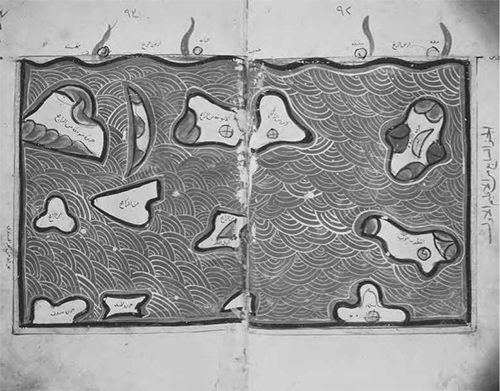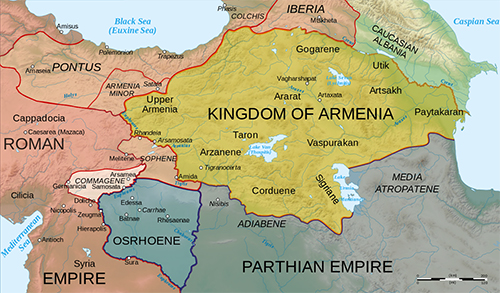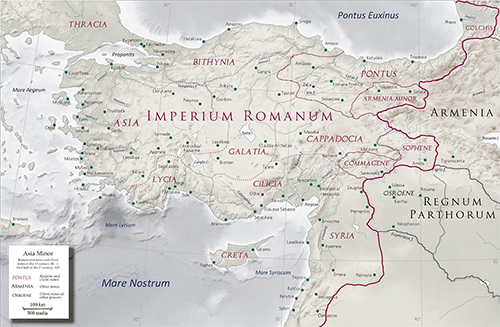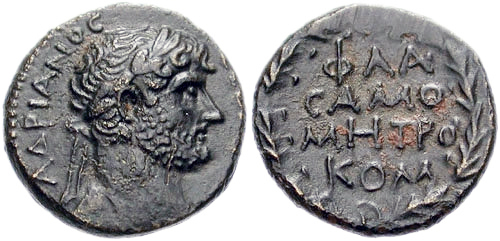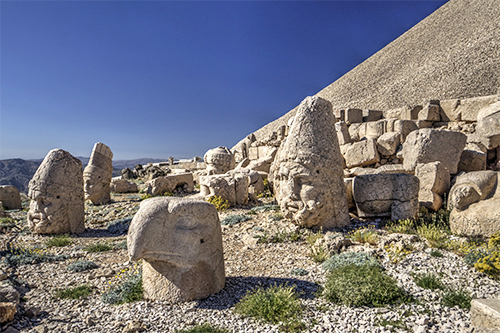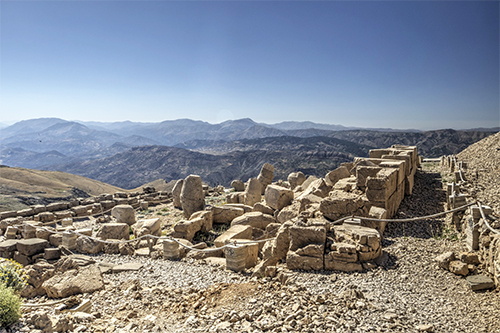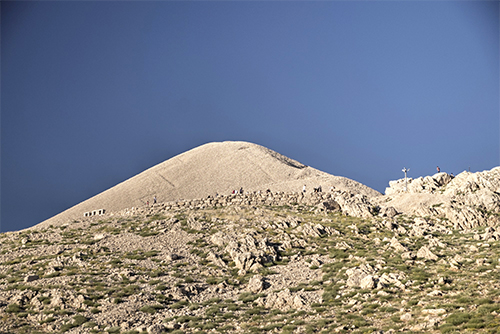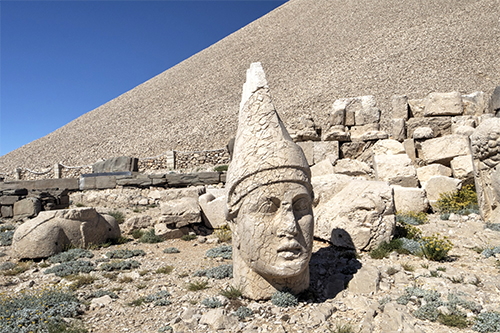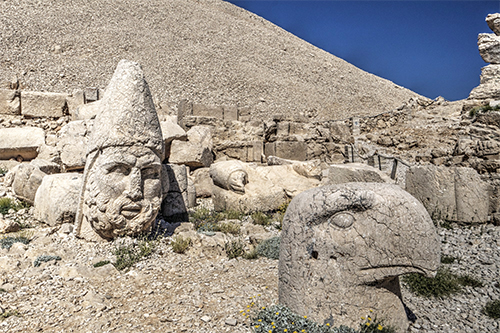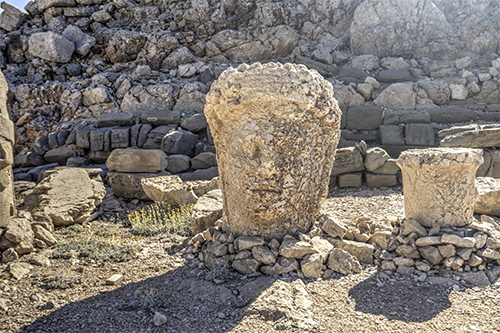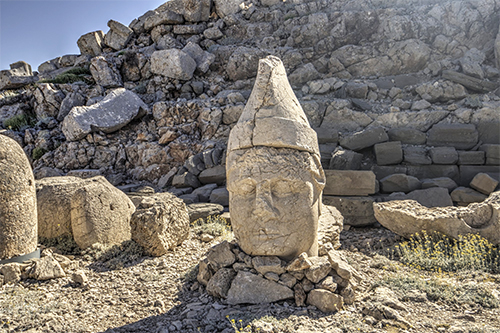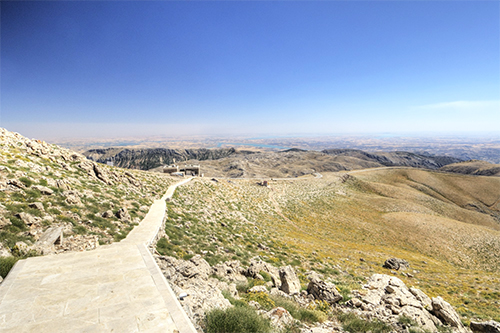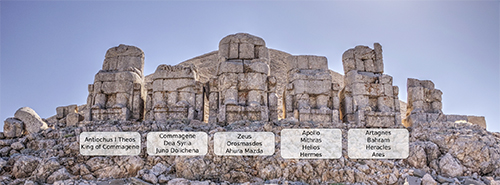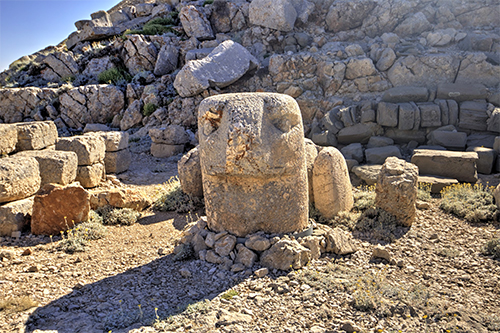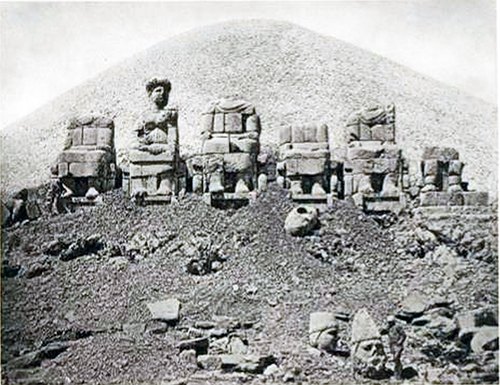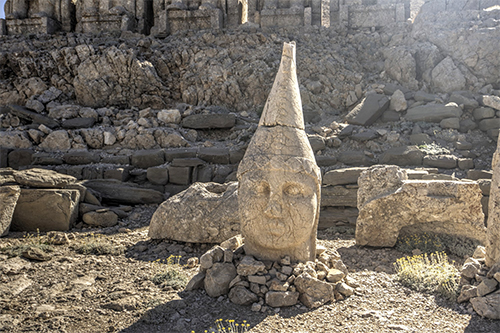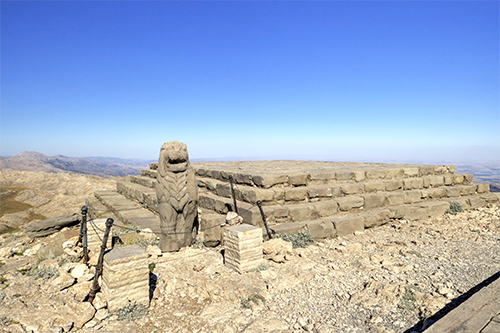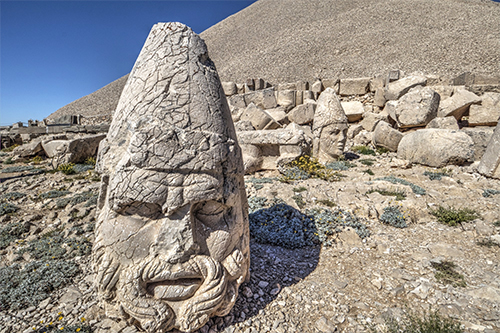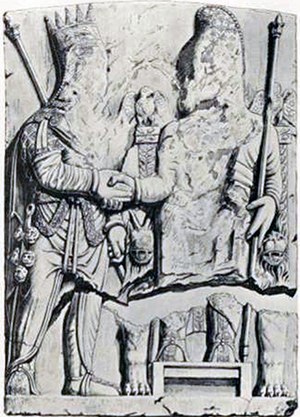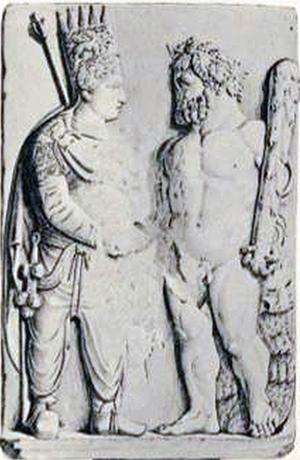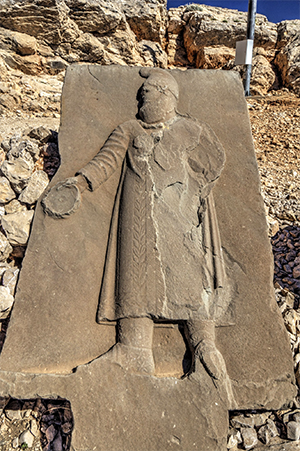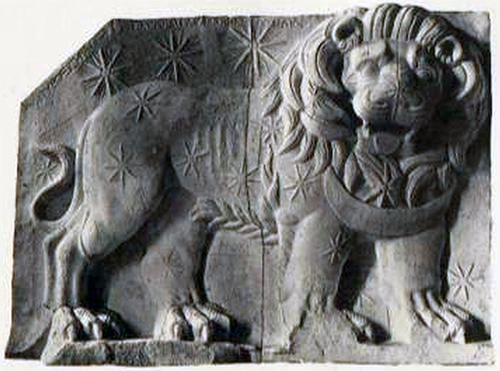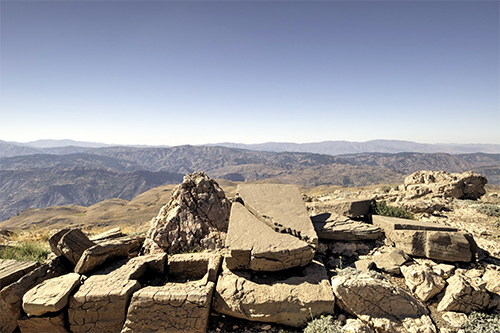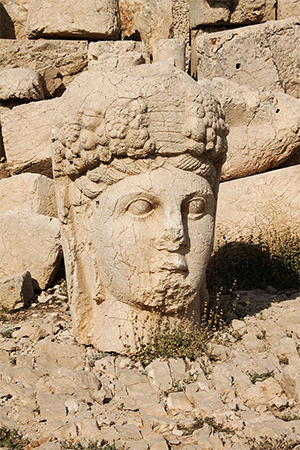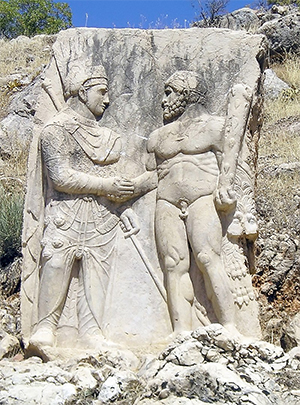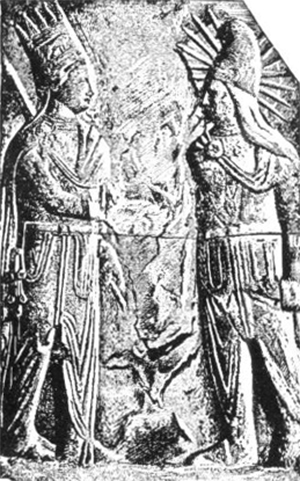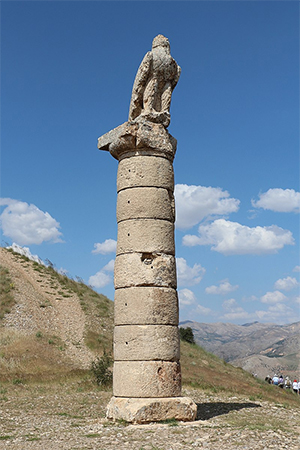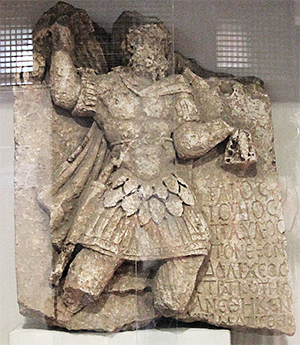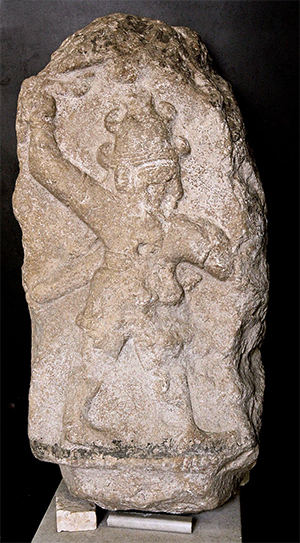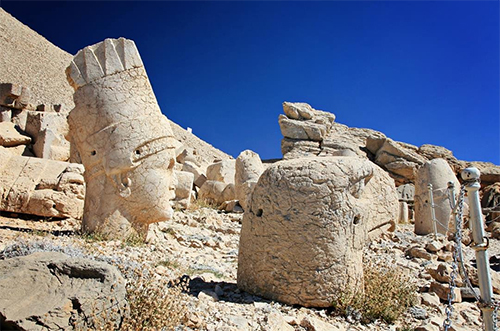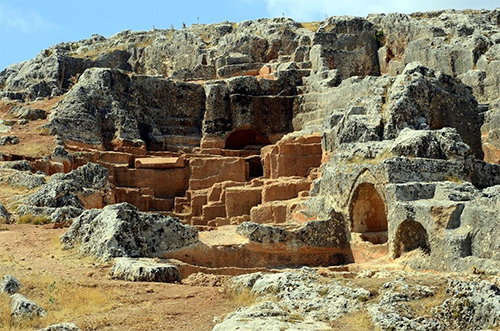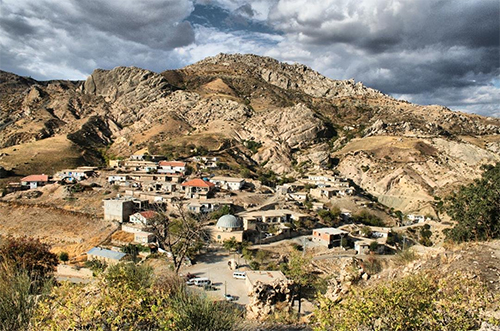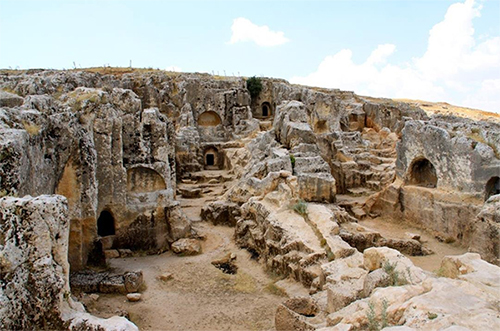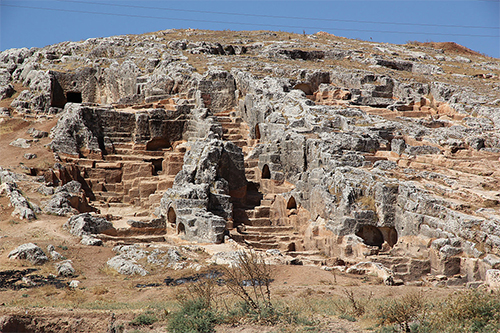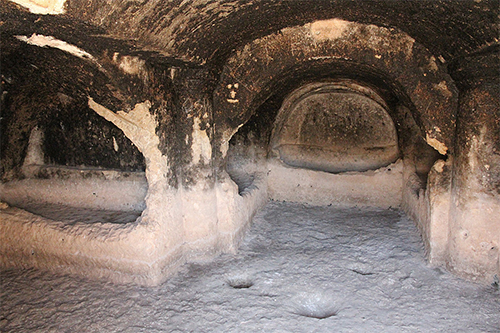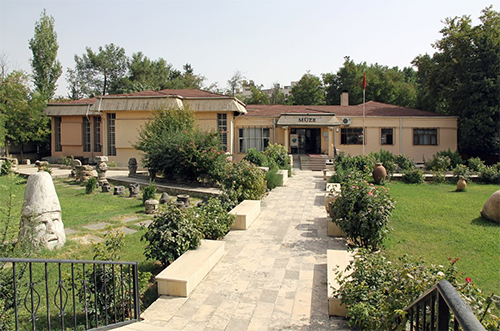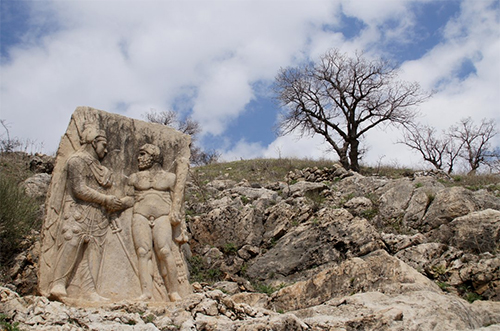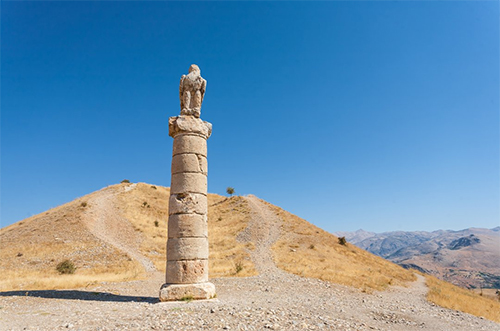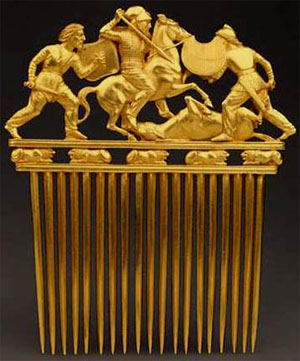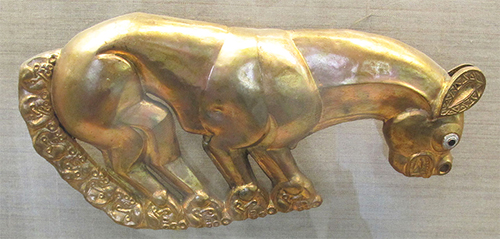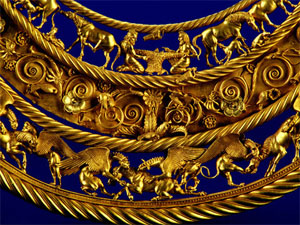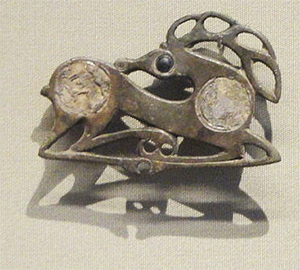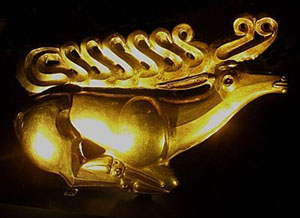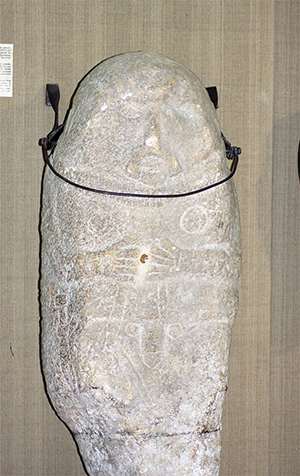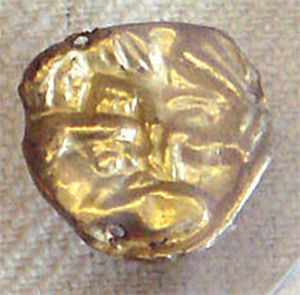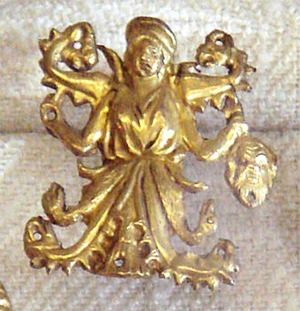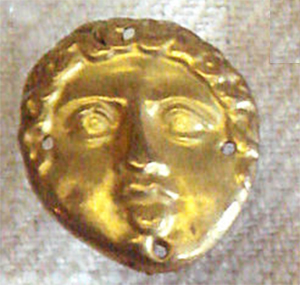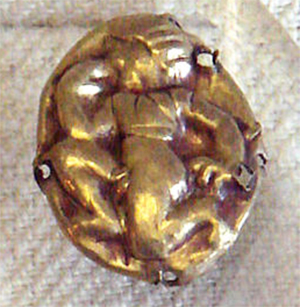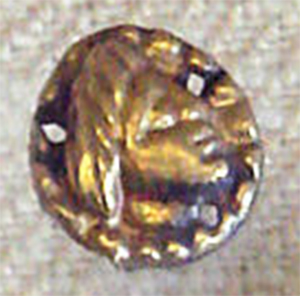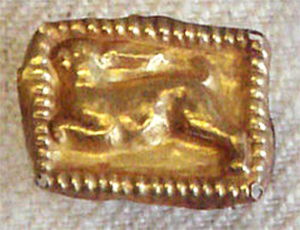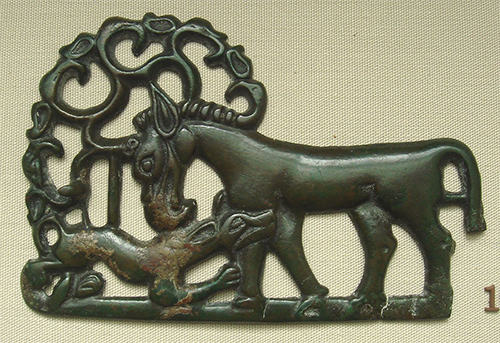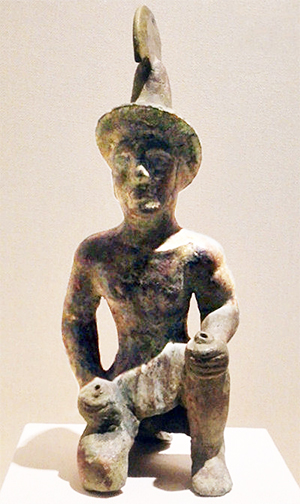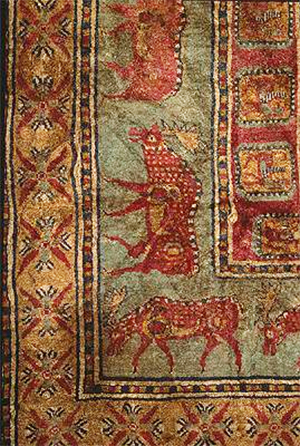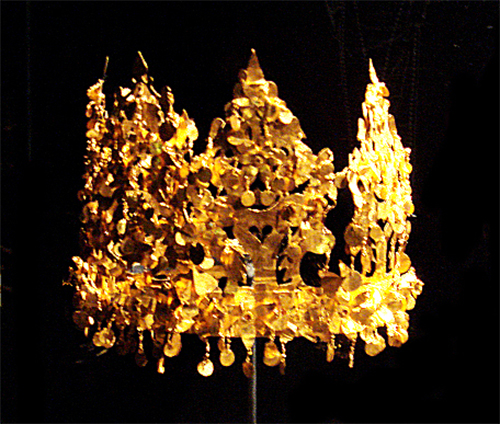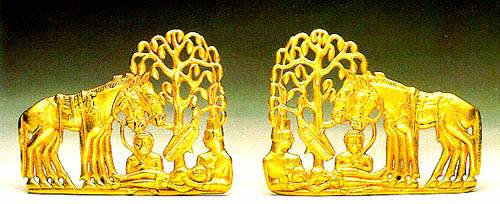DRAMATIS PERSONAE.
Men.
Chandragupta, also called Vrishala and Maurya. — The young king of Pataliputra.
Chanakya, or Vishnugupta. — A Brahman, chiefly instrumental to Chandragupta's accession to the throne and now his minister.
Rakshasa. — The minister of the last king, the enemy of Chandragupta, and whom it is Chanakya' s policy to win over to an alliance with his protege.
Malayaketu. — Son of the king of the Mountains, leading an army against Pataliputra.
Bhagurayana. — His supposed friend.
Nipunaka, — Agents and emissaries of Chanakya.
Siddhartha, — Agents and emissaries of Chanakya.
Jivasiddhi, — Agents and emissaries of Chanakya.
Samiddhartha, — Agents and emissaries of Chanakya.
A Man. — Agents and emissaries of Chanakya.
Sarangarava. — Chanakya's Pupil.
Chandana Das, — Friends of Rakshasa.
Sakata Das. — Friends of Rakshasa.
The son of Chandana Das.
Viradhagupta, — Servants and agents of Rakshasa.
Priyamvadaka, — Servants and agents of Rakshasa.
Courier.
Vaihinara. — An attendant on Chandragupta.
Jajali. — An attendant on Malayaketu.
Officers and attendants.
Women.
The wife of Chandana Das.
Sonottara. — An attendant on Chandragupta.
Vijaya. — An attendant on Malayaketu.
Persons spoken of.
Nanda. — King of Pataliputra, slain by Chanakya’s contrivance.
Parvataka or Parvateswara. — King of the Mountains, at first the ally of Chandragupta but afterwards slain privily by Chanakya.
Servarthasiddhi. — Placed on the throne by Rakshasa, after the death of Nanda, but retired to a life of devotion.
Vairodhaka. — The brother of Parvataka, and killed by Rakshasa’s emissaries by mistake for Chandragupta.
Various Princes, Chiefs, Bards, &c.
The Scene is laid partly at Pataliputra, or Palibothra, and partly at the capital, or subsequently at the camp of Malayaketu.
The time of each Act is that of the action — the intervals of the acts are uncertain.
PRELUDE.
Enter the Manager.
May the craft of that Siva protect you, who desirous of concealing Ganga* [As a goddess, Ganga, or the deified Ganges, is usually viewed as an object of jealousy by Durga the wife of Siva.] thus evaded the inquiries of his Goddess — what is this, so brilliant that decorates thy brows † [On her descent from heaven by the prayers of Bhagirath, Siva received the falling river upon his head.] — a digit of the moon — has it no name — you know the name, it is impossible that you should have forgotten it — I talk of a woman not of the moon — let Vijaya‡ [Vijaya is one of the attendants upon Durga.] tell you then, if the moon does not satisfy you.
Slay the dance of the victor of Tripura§ [Siva, from his destruction of the three cities of a demon, thence named Tripura or Tripurasura, the supposed origin of the modern Tippera. ] protect you — that dance to which space is wanting. Lightly treads the god lest he should overset the earth — he cramps his action lest his arms reach beyond the limits of the three worlds, and he bends his spark-emitting glances on vacuity, lest they should consume the objects on which they gaze.|| [The dance of Siva, and that of his consort, its exact counterpart, have already been fully adverted to in the Malati and Madhava.] Enough.
I am commanded by this assembly to represent the drama entitled Mudrarakshasa, the work of Visakha Datta, the son of Prithu Maharaja, and grandson of the chieftain Vateswara Datta;* [According to other authorities, however, the father of Prithu, Prithwi, or Prithivi Raja, was named Somesa or Vigraha Deva, and his grandfather Sarnga Deva or Visala Deva. The term Datta is also more appropriate to a man of the Vaisya tribe than a Rajput; but then Vateswara is called a Samanta, a term especially implying a warrior and a chief, and as in the case of the Jats, the agricultural tribes occasionally follow a military life. These considerations, however, leave the individuality of the author very doubtful. — Asiatic Researches, vol. xv, p. 407. Transactions of Royal Asiatic Society.] and it is a great satisfaction to me to perform this drama before an audience so capable of appreciating its merits. Justly is it said, the tillage of a blockhead will rear a harvest in a fertile soil; the luxuriant growth of the grain does not depend upon the talents of the sower. Having therefore gone home and summoned my wife† [He calls her the Griha Kutumbini, literally, the head of the house or of the family; but by the authority she exercises she should scarcely be less than his wife.] I shall proceed with my company to the representation. Here is my house: I will enter.
How now! what festival have we here to-day that all the domestics are so busy? One is bringing water, another grinding perfumes, a third weaves a chaplet of many colours, and a fourth is sighing over a pestle. I must call one of them and ask the meaning of all this. Here, you clever, sharp, sensible, hussy, come hither; you sum of all wishes and decorum, come hither.‡ [This is obviously imitated from the Mrichchakati.]
Enter Actress.
Here am I, Sir; what are your commands?
Mana. Tell me what is going on here; have any Brahmans been invited to do honour to my race, or have any welcome guests arrived that there is such preparation?
Act. The Brahmans have been invited. Sir, by me.
Mana. What for, pray?
Act. There is an eclipse of the moon to-day.
Mana. Who says so?
Act. The people of the city.
Mana. Stop your preparations, dame, for the Brahmans you have invited: there is no eclipse to-day. Trust to one who has laboured diligently in the sixty-four divisions of astronomy; for observe, when Ketu, the angry planet, labours to depose from his high throne the mighty Chandra —
(Behind.) Who talks of deposing the king?* [The original plays upon two words, Ketu the planet, or Malayaketu a prince, enemy of the present king, and Chandra his name, or the moon.]
Mana. The friendly Sage† [The planet Budha or Mercury, or in the text the Budha Yoga; but there is no Yoga so named, and unless a different system be alluded to, simple conjunction or propinquity must be implied. The term has a double import here: Budha, Mercury, or a wise man, referring to Chanakya.] is active in his defence.
Act. But who was that, who so readily noticed on earth the peril of the monarch?
Mana. I need not heed particularly, but we will find out. I will repeat what I said, and if he repeat his exclamation we may know his voice. Observe, "when the angry Ketu endeavours to depose Chandra —"
(Behind.) Who threats the king though I am yet alive?
Mana. Ha! I know; — it is Kautilya, as crooked in nature as in name,‡ [Kautilya, implies crookedness, both physical and moral.] the flames of whose anger have burnt up the family of Nanda. He has caught but part of my speech, and confounds it with an allusion to hostility towards his pupil.
Act. Here he comes: we had better get out of his way.
[Exeunt.
Enter Chanakya with his top-knot§ [The single lock of hair left on the shaven head of a Brahman.] untied.
Where is this babbling wretch, that idly threatens
The monarch I have raised? — lives there the man
That does not trembling pray he may behold
These tresses bound again, whose length dishevelled
Hangs an envenomed snake to Nanda’s race;
A smoky wreath, engendered by the fires
Of my consuming wrath? The fool, unwitting
Of his own weakness, would he play the moth,
And heedless plunge into the deadly flame
Of my resentment, blazing like a meteor,
Fierce o’er the prostrate forest of my foes?
What ho! Sarangarava.
Enter Pupil.
Your commands, Sir.
Chan. A seat.
Pup. It waits you in the porch, Sir.
Chan. Bring it here; affairs of weight disturb me.
It is not fit the teacher should endure
A scholar’s disobedience.
(Pupil brings him a seat — he sits.)
What should this rumour be, so general noised
Amongst the citizens? They say that Rakshasa,
In stern resentment of the total fall
Of Nanda’s race, stirs up th’aspiring son
Of Parvateswara; who would avenge
His father’s death, to join him, and has vowed
To make him lord of Nanda’s former realm.
With these designs, they have implored the aid
Of the great monarch of the Mlechcha tribes;* [Literally, by the great Mlechcha Raja. Mahata Mlechcharajena.]
And now, against the sway of Vrishala
These fierce and formidable foes combine.
It may be thus — 'Tis known to all the world,
I vowed the death of Nanda, and I slew him.
The current of a vow will work its way
And cannot be resisted. What is done
Is spread abroad, and I no more have power
To stop the tale. Why should I? Be it known.
The fires of my wrath alone expire,
Like the fierce conflagration of a forest,
From lack of fuel — not from weariness.
The flames of my just anger have consumed
The branching ornaments of Nanda’s stem,
Abandoned by the frightened priests and people.
They have enveloped in a shower of ashes
The blighted tree of his ambitious councils:
And they have overcast with sorrow’s clouds
The smiling heavens of those moon-like looks
That shed the light of love upon my foes.
Now may they triumph — they, who late beheld
With downward looks and struggling indignation.
Scarce smothered by their terrors, my dishonour,
Thrust from my seat, and banished from the presence,
Disgraced but not dejected — now they see me
Spurn Nanda and his offspring from their throne,
As from the mountain’s crest the lion hurls
Incensed the lordly elephant.
My vow is now accomplished, but I bear,
In Vrishala’s defence, the fatal arms
That have uprooted Nanda’s tyrant race,
Like fond affections from the breast of earth;
And now, in him, his fortune must implant,
Firm as the fragrant lotus in the lake.
Such is the equal fruit of love and hatred,
And friends and foes confess alike the power
That works their elevation or their fall.
Yet, what avails it, to have rooted out
The stem of Nanda; what to have allied
Fortune with Chandragupta, unsubdued
Whilst Rakshasa remains? His faith inflexible
Survives their ruin, and whilst yet exists
The most remote of kindred to their house
He is our foe. Well; be it so!
We must devise with craft to break the league
We cannot face. The sole remaining shoot
Of Nanda’s stem, the pious anchorite,
Sarvart’ha siddhi, tranquil lies in death;
Even in the instant Rakshasa had promised
Malayaketu, that more vigorous means
Should be pursued to overturn our empire.
(Addressing vacancy.)
’Tis bravely done, thou worthy minister,
Thou saintly priest, thou human Vrihaspati.* [The regent of the planet of Jupiter, and preceptor and councillor of the gods.]
The mercenary herd obey their lords
For their own profit: should they hold their faith
In time of adverse fortune, they expect
That future days will give back power and wealth.
How few, like thee, regardless of reward,
And animated by remembered kindnesses,
Unwearied labour in the perilous service
A master no more lives to recompense?
How shall I change the enmity of such
As thou to friendship? It but little profits
To court alliance with a fool or coward;
Nor do the brave and wise claim our dependance,
Unless fidelity confirm their worth.
They, who to intellect and courage join
Devoted faith, are wedded to their lords,
In adverse ever as in prosperous fortune.
I must not sleep in this. To win the chief
Demands my utmost care. Thus far, success
Befriends our cause, and on his head revert
His hostile councils. Whilst he designed
One of the princes to destroy, and drive
Me hence, I gained his minister, directed
The shaft against Parvataka, and spread
The rumour, Rakshasa had done the deed.
So runs the general credence; but his son,
Malayaketu, knows the truth. To him
’Twas purposely revealed; and with the aid
Of Bhagurayana, he frightened fled.
Now he is leagued with Rakshasa, and may
Defy our arms whilst aided by his policy.
Yet some discredit must attend his union
With one the world conceives his father’s murderer,
A stain no skill nor craft can wipe away.
I have my spies abroad — they roam the realm,
In various garb disguised, in various tongues
And manners skilled, and prompt to wear the shew
Of zeal to either party, as need serves.
At home, my agents, versed in every shift
And quaint device, maintain assiduous quest
Amongst the people of the capital,
And instant note amidst the multitude
The covert friends of Nanda and his minister.
The chiefs, whose ready aid placed Chandragupta
Firm on his throne, are faithful to his cause,
And careful servants keep unwearied watch
To baffle those who would administer
Envenomed draughts and viands to the king.
There is a fellow of my studies, deep
In planetary influence and policy,* [Literally, "Having obtained great proficiency in the Dandaniti political system of Usanas, and the sixty-four Angas, or branches of the Jyotish Sastra, the science of astronomy or astrology.”]
The Brahman, Induserma; him I sent,
When first I vowed the death of Nanda, hither;
And here repairing as a Bauddha mendicant,† [Having the marks of a Kshapanaka, which usually designates a Bauddha mendicant; but, as hereafter shewn, the individual is a Jain not a Bauddha, and the confusion of terms is worthy of notice, as characteristic of a period subsequent to the disappearance of the Bauddhas in India.]
He speedily contrived to form acquaintance
And friendship with the royal councillors.
Above them all, does Rakshasa repose
In him implicit confidence. ’Tis well (rises).
We triumph in his aid. Then none shall dare
Deride our purposes. The kingly burthen
Unbending, Chandragupta shall sustain,
And vigilantly guard his regal prize.
Me must not hope for indolent delights
Whose daring wins a throne. The king of men
And monarch of the woods, alike must vanquish
Frequent and fierce aggression, to enjoy
In peace the prey their prowess has achieved. [Retires.
Enter Nipunaka, a spy in the service of Chanakya, disguised, and carrying a scroll, or cloth with figures of Yama on it.* [A Yama Pata. It should seem to be a sort of raree show. The showman probably held something of a religious character; the person and his accompaniment are now unknown.]
Devotion to Yama† [The Hindu Pluto.] alone be selected,
For only by him is existence protected:
Their servants all other gods leave in the lurch,
When Yama his messengers sends in their search,
But trust we to Yama, and well are we sped,
With a friend whilst alive, and a friend when we’re dead.
I’ll enter here, show my pictures and chaunt my song.
(Entering Chanakya's house.)
Pup. Stop, stop! you must not enter here.
Nip. No! — pray, whose house is it?
Pup. It belongs to my preceptor, of well-selected name.‡ [Sugrihita namna Arya Crhanakyasya. This phrase is of constant occurrence in the preceding dramas, as well as this, and indicates the importance attached, not to well-sounding, but to lucky or propitious appellations. This superstition was common amongst the nations of antiquity; and, according to Cicero, care was taken in the lustration of the people, that those who conducted the victims, and on the formation of the army that the first soldier on the muster-roll should have auspicious names. Cum imperator exercitum, censor populum lustraret, bonis nominibus qui hostias ducerent, eligebantur, quod idem in delectu consules observant, ut primus miles fiat bono nomine. [Google translate: When the commander of the army, the censor, surveyed the people, with good names they were chosen as victims; Let the first soldier be a good name.]]
Nip. Then it belongs to a brother professor, so let me pass. I must have some talk with him, and let him see what I know.
Pup. What can you teach my master, pray?
Nip. Don’t be wroth. One man cannot know every thing; he may know some things, to be sure, and so may even such as I am.
Pup. How dare you detract from my master: he knows every thing?
Nip. Does he know, think you, by whom Chandra* [The moon, or Chandragupta.] is disliked?
Pup. What has he to do with such knowledge?
Nip. He will know what is to be known, I dare say; but you only understand thus, that the lotus cannot bear Chandra, its disposition is counter to its shape and beauty: the place abounds with such.
Chan. (overhearing). He means, the minds of men are yet averse
To Chandragupta.
Pup. What nonsense do you chatter?
Nip. I talk very good sense, if —
Pup. What?
Nip. Those who hear me understand me.
Chan, (aloud). Advance, you will find one, friend
Willing to hear and understand.
Nip. Long life to your Excellency!
Chan (apart). Amidst my many missions I forget
What was assigned Nipunaka. Oh! I remember.
He was to gather and report the state
Of public feeling. Welcome, friend; sit down.
Nip. As your honour commands. (Sits on the ground.)
Chan. Now for your news. What say the citizens —
How do they stand affected?
Nip. Your Excellency has removed all their grievances, so that they cannot choose but be well affected to the auspicious Chandragupta. There are, however, in the city three men attached personally to the minister Rakshasa, who cannot bear his Majesty’s prosperity.
Chan. They weary of their lives then — who are they?
Nip. The first is a Bauddha beggar.
Chan, (apart). A Bauddha beggar — excellent. (Aloud) His name?
Nip. Jivasiddhi.
Chan, (apart). My own true emissary. (Aloud) Well, who next?
Nip. Rakshasa’s very particular friend, the scribe Sakata Das.
Chan. (apart). A scribe — a matter of light moment; yet ’Tis well not to despise a foe though humble:
He has been noted — and Siddharthaka
Fastened upon him as a friend. (Aloud) The third?
Nip. Is also the friend of Rakshasa, an inhabitant of Pushpapur, the head of the jewellers, named Chandana Das. In his house the wife of the minister was left when he fled from the city.
Chan, (apart). This man must be, in truth, his friend:
To one, alone, he valued as himself.
Would Rakshasa commit so dear a charge.
(Aloud) How know you, that the wife of Rakshasa
Was left in trust of Chandana Das?
Nip. This seal-ring will apprize you.
Chan, (taking the ring*
[Fn. Begins:
Anguliya mudra, a finger-ring seal. Seals or signets of this kind were from the earliest periods commonly used in the East. Ahasuerus takes his signet off his hand and gives it first to Haman and again to Mordecai; and Herodotus notices that each of the Babylonians wore a seal-ring. The Greeks and Romans had their rings curiously engraved with devices, and that cast by Polycrates into the sea was the work of an engraver whose name the historian has not thought unworthy of commemoration. Thus also in the Demagogues of Aristophanes: —
"Demus. This is no ring of mine, it tallies not
With my device, or much my eyes deceive me.
"Sausage Seller. Allow me, Sir. What might be your impression?
"Dem. A roasted thrium. in thick fat enclosed.
"Saus. I see no thrium.
"Dem. What the impression then?
"Saus. A wide-mouthed gull, high seated on a rock.
In act to make a speech.”
The use of the seal amongst the ancients, as amongst the Orientals to the present day, was not, as with us, to secure an envelope, but to verify letters and documents in place of a written signature. Amongst the natives of Hindustan, both Mohammedan and Hindu, the seal is engraved with the name of the wearer, and the surface being smeared superficially only with ink, the application of the seal to the paper leaves the letters which are cut in the stone, white on a black ground. Such also was the manner in which the seals of the Greeks and Romans were applied. It might be suspected that the translator of Euripides was thinking of a seal of wax on the outside of a letter, in the following passage in Iphigenia in Aulis:
"Attendant. But how, if I speak thus, shall I find credit,
Or with your daughter, or the royal dame?
"Agamemnon. The seal which on that letter I have stamped,
Preserve ‘unbroken.’"
It is literally ‘‘Take care of the seal which you bear on that letter.” The stage direction should be probably "giving his ring to the messenger,” a mark of confidence, and a confirmation of the previously impressed signature, which would induce Clytemnestra to trust him implicitly. There could be no need to charge the messenger not to break, or not to efface a mere impression within a folded letter, as it is previously described; and if that impression alone were sufficient to inspire belief, it was unnecessary for the messenger to require of Agamemnon to grant any further token. Sphragis, the word used in all these places, is placed by Julius Pollux amongst the synonimes of finger-ring seals, Episemoi daktylioi.
Fn ends.]
and reading the name) Rakshasa —
Rakshasa is in my grasp! (Aloud) How got you this?
Nip. I will tell your Excellency. It was your pleasure that I should take note of the sentiments and conduct of the citizens. To gain free access to their habitations I assumed this disguise, and amongst other houses I entered that of Chandana Das. Exhibiting the Yama show, I commenced my ballad, when a little boy of about five years of age, of a most lovely appearance, his eyes sparkling with the curiosity common at his years, ran out from a viranda in the court. Cries of, "He is gone out — he is gone out!" uttered by female voices proceeded instantly from the apartment adjoining, and a woman coming to the door caught hold of the child and dragged him in with some little resistance. She exposed her person with evident caution, so that little more of her was distinguished than a pair of very beautiful arms. In the struggle with the child, however, this ring, which as it is a man’s ring was probably too large for her finger, slipped off, and rolling near my foot stopped there, like a modest woman stooping to make a bow. I took an opportunity of picking it up unobserved, and finding that it bore the name of Rakshasa I brought it to your honour.
Chan. Sarangarava.
Enter Pupil.
(To Nipunaka.) You may withdraw, now I have heard the story:
But before long your toils shall be rewarded.
Nip. As you command, [Exit.
Chan. Paper and ink! What shall I write? By this
Is Rakshasa to be subdued.
Enter a Female Servant.
Serv. Victory to your Excellency!
Chan. (apart). I accept the omen.* [Great importance is attached to the fortuitous expressions of individuals throughout these dramas, and a prosperous or unprosperous result anticipated from the thoughts or the words, by the person to whom they are addressed. The Greek plays are full of similar instances, and they are sufficiently abundant in every other department of classical literature. Cicero cites various curious examples in his book "De Divinatione.” That related of Lucius Paulus is very analogous to the instance in the text. "Lueius Paulus the consul had been appointed to conduct the war against Perseus. On returning to his house in the evening he found his little daughter Tertia full of grief, and on asking her what was the matter, replied ‘Persa (a puppy so named) is no more.’ Taking her up in his arms, and kissing her, the consul exclaimed, ‘I accept the omen,’ and the event corresponded with the expression.” The effect of the omen seems also with the Hindus, as well as the Greeks and Romans, to have depended in a great measure upon a person’s applying it, and signifying his acceptance of it. The phrase addressed to Chanakya is a customary one to princes and ministers, Jayatu arya, and it is rendered prophetic by Chanakya’s assent, Grihitoyam Jaya sabda. The word jaya (victory) is accepted. Oionon dekesthai, Omen arripere, and Sabdam Grihitum, are terms of similar import in the three languages.] (Aloud.) Sonottara, what news?
Son. His Majesty Sri Chandra has sent me, with his profound respects, to request your assistance in paying the final honours to Parvateswara; and it is his wish to make an offering to learned Brahmans of the jewels and valuable articles worn by that prince.
Chan, (apart). In all he meets my wishes. (Aloud) Go, Sonottara,
Inform the king his purpose is most fitting.
And should be speedily performed. As for the gems.
They are no doubt of cost, and should be given
Only to Brahmans of repute. Those I will send
When I have put their merits to the test,
To take the presents at his hands.
Son. I obey. [Exit.
Chan. Sarangarava, seek out Viswavasu,
Bid him and his two brothers from the king
Receive those gifts, and then repair to me.
[Exit Pupil.
What further purpose shall I give the letter?
My spies inform me, of the Mlechcha princes.
The chiefest five, or Chitraverma king
Of Kuluta — the king of Malaya, Nrisinha,
The lion-voiced — the monarch of Cashmir,
Brave Pushkaraksha — Sindhusena, prince
Of Saindhava, for enemies o’erthrown
Renowned; and powerful with his hordes of horse,
Meghak’hya — Parasika’s sovereign;* [The position of Kuluta is not known; that of Malaya, the western Ghats, is very oddly introduced as a kingdom other than Hindu. Saindhava, is Sindh and Balochisthan; and Parasika, Persia.] these
Are friends of Rakshasa. 1 write their names;
Let Chitragupta† [The registrar of Yama, or the recorder of the dead.] wipe them from the record. —
No, not their names. It were as well to leave
Some indistinctness. Ho, Sarangarava.
Enter Pupil.
I have bethought me — learned Brahmans write
Not always clearly. To Siddharthaka
Convey these my instructions. (Whispers.) I myself
Will tell him for what purpose, and for whom
The note is meant, and who the writer is.
Let it be copied by Sakata Das, and folded
In fashion of a letter, but not addressed;* [Literally, "without any name being seen externally.”]
Nor let the writer know he writes for me.
Pup. As you direct. [Exit.
Chan. Malayaketu is o’erthrown!
Enter Siddharthaka.† [In the conduct of the business this piece is inferior to its immediate predecessors, and bears most resemblance to the Mrichchakati.]
Sid. Victory to your Excellency! the letter is prepared.
Chan. Let me peruse it — Right,
Now sign it with this seal. (Gives Rakshasa’s seal-ring)
Sid. It is done. What else?
Chan. I would assign you
A business of great import.
Sid. I hold myself much honoured by the trust.
Chan. Go to the place of execution, give
The executioner a signal privily,
And then put on a most ungoverned fury.
Attack the officers, and they, prepared,
Will fly in seeming terror. They dispersed,
Untie the bonds that fasten Sakata Das,
And with him shape your flight to Rakshasa.
He, for the preservation of his friend,
Will give you ample recompense, which you
Accept, and for a time remain his follower,
Until the foes approach the city, when
This end must be contrived. (Whispers.)
Sid. As you command.
Chan. Sarangarava!
Enter Pupil.
Bear the chief officers of justice* [The Kalapasika and Dandapasika, the bearers of the noose of death and of punishment.] these,
The king’s commands: — Arrest the Bauddha mendicant
Named Jivasiddhi; let it be proclaimed
He was commissioned here by Rakshasa,
And by the poisoned maiden has destroyed
The prince Parvataka. Be this duly cried,
And then he must be banished with each mark
Of contumely from the capital.
The scribe, too, Sakata Das, whom Rakshasa
Stirs up to plot against the royal person,
Let him be seized! his crime proclaimed abroad;
Then bear him to the stake, and into bonds
Conduct his family.
Pup. It shall be done. [Exit.
Chan. Now shall Rakshasa be taken.
Sid. (advancing ). I have taken—
Chan, (apart). Rakshasa; most true. (Aloud) Whom?
Sid. — Your highness’s commands, and now depart
To give them action.
Chan. It is well. (Giving him the letter and the ring.)
Success attend you!
Sid. Such are your commands. [Exit.
Enter Pupil.
Pup. The officers obey the orders of the king.
Chan. Now, child, go call the provost of the jewellers,
Chandana Das his name.
Pup. I shall obey. (Exit and returns with him.) This way,
Provost,
Chand. (apart). Chanakya’s cruel nature gives alarm
To those who are not conscious of offending: —
I have offended — what can I expect!
I have desired my friends, lest that my house
Be seized on by this tyrant, to remove
The family of Rakshasa, and now
I am prepared — what may befall me, may be.
Pup. Here, sir, is Chandana Das.
Chand. Glory to your Excellency!
Chan. Provost, you are welcome: sit.
Chand. Excuse me, sir,
This ceremony suits not with the sorrow
In which the sufferings of my friends
Have left me. I will sit me down,
So please you, on the ground.
Chan. It must not be;
This distance needs not when with such as I am.
Here, take this seat.
Chand. If you will have it so.
(Apart.) What does he purpose?
Chan. Now, Provost, does your trade
Yield you due profit?
Chand. With your honour’s patronage,
All trade must flourish, so of course must mine.
Chan. And do the people still recall to mind
The many virtues of their former lords,
When they comment on Chandragupta’s vices?
Chand. I cannot hear such words. (Stops his ears.)
The virtues of his majesty afford
The soothing pleasures that autumnal moons
Diffuse.
Chan. It may be; but all kings expect
To meet from those they cherish some requital.
Chand. You need but speak it, sir, and any sums —
What monies may be needed?
Chan. You forget;
This is the reign of Chandragupta, not
Of Nanda. To his avaricious soul
Your treasures were acceptable; but now,
Your king esteems your happiness his wealth.
Chand. I joy to hear it.
Chan. You should rather ask
How best such happiness may be evinced.
Chand. Command.
Chan. ’Tis easy — let no man presume
To offer opposition to his sovereign.
Chand. What luckless wretch exists, who would pretend
To think of opposition! Does your grace
Know such a man?
Chan. Thou art the man.
Chand. Alas!
How should a blade of straw encounter flame?
Chan. Yet thus it is. Why, even now your house
Gives shelter to the family of Rakshasa,
The open enemy of Chandragupta.
Chand. This is untrue. Some base and secret foe
To me has brought this story to your ears.
Chan. You need not be alarmed. The miscreant servants
Of the late sovereign, when they fled the state,
Compelled by force the honest citizens
To give unwilling shelter to their families.
In this they are unblamed — the only act
That makes it an offence is its concealment.
Chand. I do admit that formerly, indeed,
The family of Rakshasa was thus
Lodged in my house.
Chan. This is again untrue:
Your former declaration would imply
They never found asylum in your mansion.
Chand. I own I was in this not quite sincere.
Chan. Such insincerity will now obtain
Its proper estimation — but deliver
The family of Rakshasa, and you may yet
Be held excused.
Chand. I have already said —
They were in my abode.
Chan. Where are they gone?
Chand. I do not know.
Chan. You do not know! Beware:
The hooded snake hangs over you, and far
Your hope of safety lies. As Vishnugupta
Will Nanda — (checking himself). What! merchant, can you be
So idle, as to cherish hopes that Rakshasa
Will triumph over Vrishala? Have you forgotten,
Fortune deserted Nanda in his life,
With all his power and warlike friends to back him?
Now she is steadily affianced — bound
To Chandra, as is moonlight to the moon;
And who shall think to sunder them? who so rash,
To thrust his arm into the lion’s jaws.
And seek to tear away his pointed fangs,
Red as the twilight moon, stained with the blood
Of the fresh-slaughtered elephant?
Chand. (apart). These words,
Alas! too well events have justified.
(A noise behind.)
Chan. How now, Sarangarava, what has chanced?
Pup. The Bauddha beggar. Sir, named Jivasiddi, is banished from the city by order of the king.
Chan. A holy man — I mourn his fate: yet such
The treatment that the prince’s foes deserve.
You mark, good Provost, — Vrishala resolves
To treat his enemies with just severity.
Take a friend’s counsel, and give up the family
Of Rakshasa, then Chandragupta’s favour
Will long be your’s.
Chand. They are not in my dwelling.
(A noise behind.)
Chan. Again! — Sarangarava, what is this?
Pup. The scribe, Sir, Sakata Das, is led forth to be impaled.
Chan. So let him reap the fruit of disobedience. —
You see the king is stern. Believe me, Provost,
He will not brook your giving an asylum
To those who are his enemies. Resign them —
So you and yours shall yet escape with life.
Chand. What signs of fear do you behold in me.
To think I should be moved to sacrifice
Those I had sheltered, by the dread of death?
But I have said it — those you seek of me
I have not in my power. What more remains?
Chan. You hold to this?
Chand. I do.
Chan. (apart). ’Tis bravely spoken.
Who in this selfish world would lose the hope
Of affluence, and like Sivi,* [Sivi was a prince who, to save a dove from the pursuit of a hawk without prejudice to the latter, gave it a piece of his own flesh.] thus discharge
The arduous task of generous self-devotion!
(Aloud.) This is your last resolve?
Chand. It is.
Chan. Expect the king’s displeasure.
Chand. I am prepared — do with me as you please.
Chan. Sarangarava, bid the officers
Secure this miscreant. Hold! let them seize† [This duty is assigned to the Durga palaka and Vijaya palaka, who should be military officers, if not proper names.]
His house and family, and keep them close,
Till I impart this matter to the king:
He will, I know, command the forfeiture
Both of his wealth and life.
Pup. I shall obey — this way Provost.
Chand. I attend. (Apart.) Happy that friendship’s claim.
Not mortal frailty, terminates my life.
[Exit.
Chan. Now Rakshasa is safe; for when he learns
The faith and imminent danger of his friend.
Imperilled in his cause, he will, I know.
Be eager to prevent the sacrifice;
And ere he suffer that this merchant lose
His life for him, will offer up his own,
As much less precious than so dear a friend. (Noise)
How now!
Enter Pupil.
Pup. Siddhart’haka has rescued Sakata Das, Sir, as he was about to suffer death, and they are fled together.
Chan. (apart). Our work is well begun. (Aloud.) Fled, say you?
Quick! boy, and order Bhagurayana
To overtake and seize them.
(Pupil goes out and returns.)
Pup. Alas! Sir, he too has disappeared.
Chan. (apart). For our advantage. (Aloud.) Let him be pursued.
Where are the officers?* [In the original, Chanakya names them: Bhadrabhata, Purushadatta, Dingirata, Balagupta, Rajasena, Rohitaksha, Vijayaverma; and it may be observed, that they are names not of present currency, although Sanscrit. Chanakya also sends out to dispatch them after Bhagurayana as before, a ceremony dispensed with in the translation.]
Pup. They are overcome with terror; and Bhadrabhata and many other chiefs, I learn. Sir, were off this morning long before daylight.
Chan. (apart). They will promote our triumph. (Aloud.)
Let them go.
We shall not miss them. Those who now have fled,
Had in their hearts deserted us. Let all
Who would abandon us be free to go:
I heed them not, whilst yet the mind is firm
That plucked down Nanda, and in which I feel
More powerful far than in a hundred hosts.
Let not my spirit fail, though left alone.
And we shall conquer. As for the fugitives,
They shall be seized and meet with their reward.
(Apart) Now, Rakshasa, I have you — I shall see you
Tame and submissive to my sovereign’s will,
Caught by superior craft, though now you roam
Unshackled like the elephant, whilst yet
He ranges, high in blood, amidst the shades
And cooling torrents of his native woods.
[Exeunt.
END OF THE FIRST ACT.

